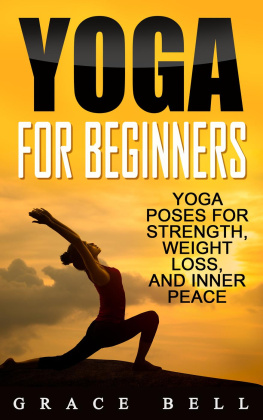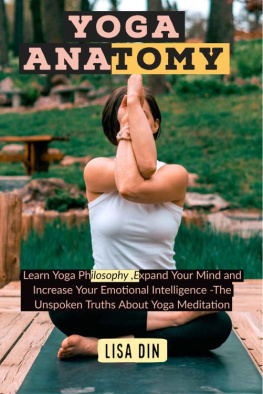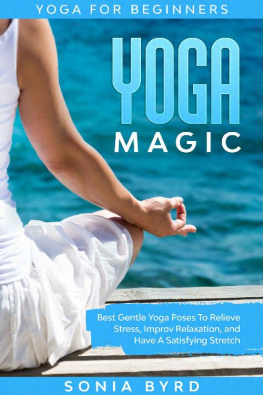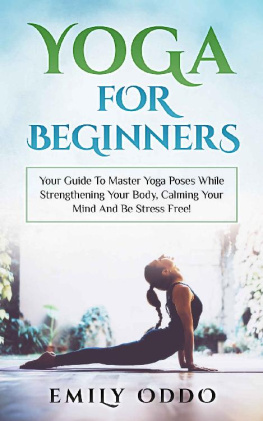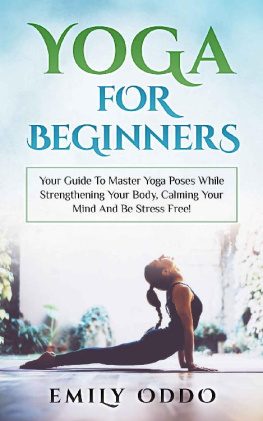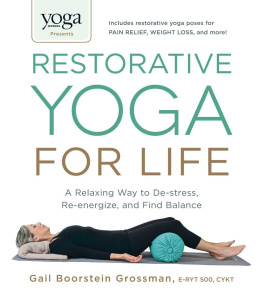Illustrated and Explained Yoga Poses + Easy Yoga Classes to Do at Home to Reduce Body Fat, Improve Flexibility and Eliminate Stress + Fitness and Food Journal to Keep Track of your Results
Introduction
WHAT IS YOGA
One of the best known and most important terms in the entire Indian culture is the word "Yoga".
It comes from the Sanskrit root "you" which means: to put together to perform an action, to unite.
Yoga, therefore, has a philosophical meaning (it is part of the six Darshana or "vision" of Indian thought) and a practical application, that is, a method to unite and integrate the human being in the various planes that constitute it, but also to unite it with other beings and the nature that surrounds it.
Starting from a general vision of man, of his being and existence, Yoga formulates a theoretical thought and a practical discipline, which apply to more material and concrete aspects of life but also to existential speculations of thought and to the evolutionary aspirations of human being.
Yoga, therefore, consists of a theoretical and a practical aspect that include a philosophy, a psychology, a mystical and meditation component combined with the means to achieve them, an evolutionary spiritual process, which is not linked to a specific religion. Yoga aims at psychophysical well-being, which requires a precise knowledge of physiological processes, as well as psychic processes and the interaction and reciprocal influence between mind and body, anticipating. Yoga also develops personal and social ethical and behavioral norms (Yama and Nyamu) and therefore can also be defined as a particular form of sociology.
BENEFITS
By practicing Yoga regularly even for a few minutes, it is possible to increase well-being, calm and mental clarity. Frequent practice allows you to develop greater responsibility and focus, to better face the challenges of everyday life.
The Yoga practitioner is able to better define his own existential path and better manage his emotions.
The techniques of Yoga serve to harmonize the body-energy-mind system and the practitioner increases strength, determination, clarity of ideas.
The benefits of physical activity carried out with Yoga are reflected on the mind and body, facilitating and helping in the various phases of life and to achieve the set goals. Yoga is therefore a perfect match also to diet, because it helps to increase serenity and the determination to lose weight and the physical activity performed is perfectly combined with the need to burn fat.
The benefits of Yoga can therefore be summarized as follows: It improves our cardiocirculatory circulation
Helps to manage daily stress
It reduces anxiety, panic attacks and depression
It allows us to be clearer and more focused
Improve our balance and our strength
It stretches our muscles, making us more flexible
Relieves muscle and joint pain
Improve your breathing
It helps to manage all our emotions, from anger, to sadness, to joy It makes the skin more toned, more elastic and younger
Eliminates sleep disorders, such as insomnia
It allows us to know ourselves better
In pregnancy, it benefits both mother and baby
In addition, according to tradition, constant practice is able to awaken the Kundalini, the divine energy that lies in every human being. This energy starts from the base of the column and rises to the top of the head, crossing the 7 chakras.
Not only better muscles and greater flexibility, therefore, but also a deep introspection and ability to manage ourselves and our emotions.
Yoga is literally capable of improving every aspect of our life. In this book you will find some Yoga poses explained and easy to practice and a simple exercise program to perform at home in no time. The goal is to increase mental and physical well-being and if it is also combined with a diet it will be even easier and more fun to lose weight!
Basic Yoga Positions (Asana)
The third of the eight Angas , or arms, of classical yoga, described by Patanjali in the Yoga Sutras, after the Yamas and Niyamas , are the Asanas or physical positions, which represent the basis for the practice of the higher stages, such as the techniques of breathing, concentration, and meditation.
To practice Yoga correctly, choose a place that allows you to be calm and where there are no distractions. It doesn't take much time, but concentration.
Each exercise involves inhalation and exhalation activities that are used to regulate the oxygen supply to the muscles, to relax the body and to control the heartbeat.
In fact, Pranayama or breathing: Prana means energy and also breath and Ayama means control are fundamental in Yoga.
Thanks to the asanas it is possible to stimulate the opening of the energy centers of the body, the chakras, and in this way connect with the universal energies.
In essence, therefore, the purpose of asana practice is therefore primarily spiritual. The posture aims to create a state of stable balance on a physical, emotional, psychological and mental level, not to become better athletes nor to firm the lower back (although it can have these effects as a side effect).
Recommendations:
Don't push your body beyond its limits, the more you practice yoga, the more your balance will improve.
Alternate the left / right side in the various poses.
Now you can start ...
Hero Pose Sanskrit: Sukhasana
How to do it
Begin to sit on the mat with the seat bones on the front edge of a folded blanket.
Cross your shins parallel to the mat, placing your feet each under the opposite knee.
Press your seated leg bones down and straighten your back to straighten your spine. Open your shoulder blades.
Place your hands on your knees with palms facing up or down (calming). Close your eyes and inhale and breathe.
Try to change the crossing of the legs each time you repeat the pose.
Benefits
This position is useful for calming the mind and practicing meditation. In addition, it strengthens the back and hips.
Tree Pose
Sanskrit: Vrksasana
How to do it
To perform the mountain pose, start by choosing a fixed point in front of you to watch so as not to lose your balance.
Begin to inhale and slowly shift your weight into your left foot and lift your right foot off the floor about an inch. Now use your right hand to rest your foot at the inner thigh, do not place your foot directly on the knee.
As you continue to inhale, keep your back straight and try to stretch your neck and top of your head. Bring your palms in front of your chest and join them as if in a prayer.
If you are an experienced practitioner or if you already master this position, you can raise your arms to the sky in a V, look up and also try to close your eyes, always maintaining balance.
The benefits
This position is an exercise for concentration and the ability to maintain balance, training the feet and the outside of the hips.
Fish Pose
Sanskrit: Matsya








